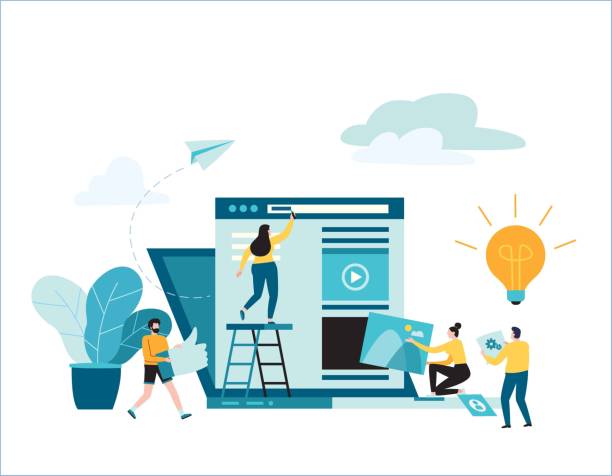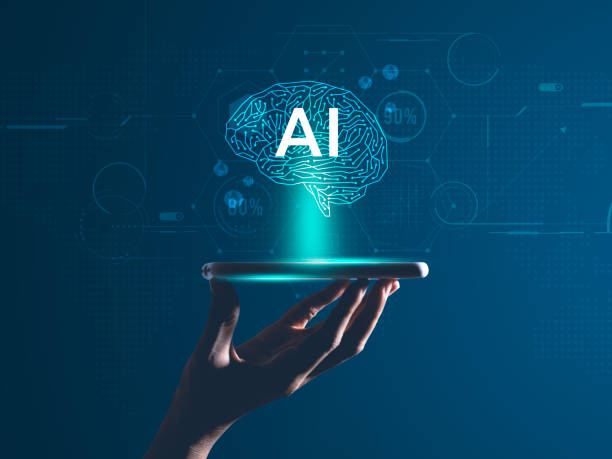Introduction to the Importance of Speed in Web Design
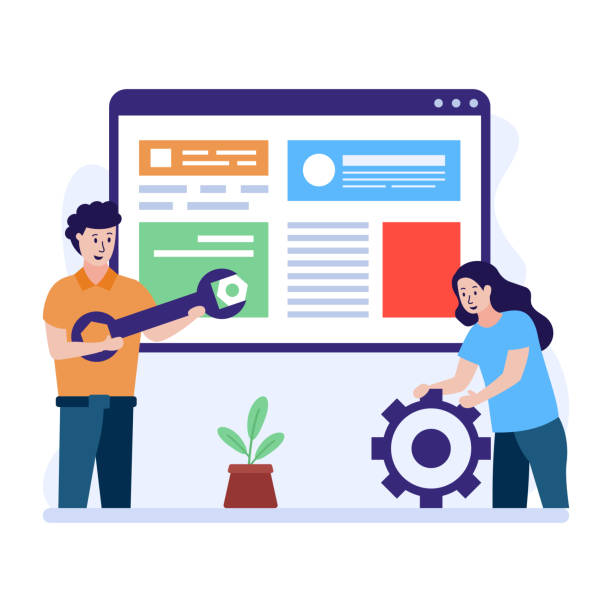
In today’s digital world, website loading speed is not just an advantage, but a vital necessity.
Today’s users are impatient and expect websites to load in a fraction of a second.
If your website is slow, users will likely leave it and go to your competitors.
This directly impacts #User_Experience (UX) and can significantly increase the Bounce Rate.
Furthermore, site speed is considered one of the important SEO factors.
Search engines like Google display faster websites higher in rankings because they provide a better user experience.
Therefore, fast website design and optimizing its performance is considered a strategic investment for any business.
This is a crucial aspect of modern web development that must be considered from the outset to ensure your website is not only beautiful but also efficient and fast.
The importance of #Site_Speed is so high that even a one-second delay in loading can mean losing thousands of potential customers.
To understand this issue more deeply, we must look at its various dimensions, including technical and practical aspects.
Are you tired of losing business opportunities due to not having a professional corporate website?
Rasawab helps you with professional corporate website design:
✅ Build a powerful and reliable image for your brand
✅ Convert website visitors into loyal customers
⚡ Get free consultation now!
Factors Affecting Website Loading Speed

To achieve fast website design, it is essential to understand the factors affecting loading speed.
One of the most important factors is #Image_Optimization.
High-volume images can significantly reduce site speed.
Compressing images without a noticeable loss in quality and using modern formats like WebP can be a big step in this direction.
Another factor is #Caching, which dramatically increases the loading speed of repeated pages by temporarily storing website files in the user’s browser or on the server.
Heavy and unorganized CSS and JavaScript files are also reasons for site sluggishness; #Code_Minification and combining these files help reduce loading time.
Server Response Time is also a key factor.
Inadequate hosting or poor server configuration can cause delays in data transmission.
The number of HTTP requests, the use of multiple web fonts, and lack of database optimization can all affect speed.
Each of these factors requires expert review and necessary changes to achieve the highest level of performance.
#Technical_Tips for speed improvement also include using CDN (Content Delivery Network), reducing redirects, and removing extra code and unused plugins.
Website Speed Assessment Tools and Techniques
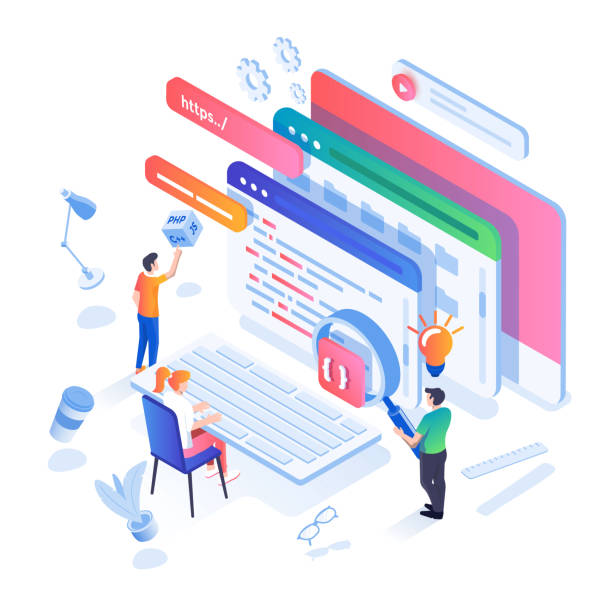
After familiarizing yourself with the factors affecting speed, the next step towards fast website design is a precise assessment of website performance.
Fortunately, powerful tools are available for this purpose that help you identify your website’s strengths and weaknesses.
The most prominent of these tools include Google PageSpeed Insights, GTmetrix, and Lighthouse (built into the Chrome browser).
These tools not only provide your website’s speed score based on various criteria but also offer practical suggestions for improvement.
#Speed_Assessment_Tools can identify issues such as unoptimized images, render-blocking codes, or server problems.
Correct interpretation of these tools’ results requires technical knowledge, but the recommendations provided are usually in simple, understandable language.
For example, PageSpeed Insights provides scores for performance, accessibility, best practices, and SEO, completing the details of each item with explanations and links to educational resources.
Regular use of these tools is a vital part of your website’s ongoing maintenance and improvement process.
| Tool Name | Primary Use | Key Features | Suggested Level |
|---|---|---|---|
| Google PageSpeed Insights | Comprehensive performance evaluation based on Google’s criteria | Core Web Vitals score, optimization suggestions, mobile/desktop breakdown | Beginner to Advanced |
| GTmetrix | Deep Waterfall analysis and A/B/C grading | Shows loading time for each request, detailed suggestions, scheduled monitoring | Intermediate to Advanced |
| Lighthouse | Built-in Chrome browser tool for comprehensive reporting | Checks performance, accessibility, best practices, SEO, PWA | Beginner to Advanced |
Optimizing Images for More Speed

One of the biggest factors affecting page loading time is image size.
To ensure fast website design, #Image_Optimization is a mandatory and vital step.
First, choosing the appropriate image format is important.
For images with high detail and diverse colors, JPEG is suitable, while for logos, icons, and transparent images, PNG is a better choice.
However, next-generation formats like WebP, developed by Google, offer smaller sizes with similar quality and should be prioritized.
Second, compress images before uploading.
Many online and offline tools are available to reduce image size without significant quality loss.
Third, use the #Lazy_Loading feature.
This technique ensures images are only loaded when they are within the user’s viewport (the visible part of the page), which is particularly useful for long pages with many images.
Fourth, provide Responsive Images that load according to the user’s screen size (mobile, tablet, desktop) to avoid imposing extra volume on mobile users.
By observing these tips, you can significantly reduce your website’s loading time and dramatically improve the user experience.
Are you tired of losing business opportunities due to not having a professional corporate website?
Rasawab helps you with professional corporate website design:
✅ Build a powerful and reliable image for your brand
✅ Convert website visitors into loyal customers
⚡ Get free consultation now!
The Role of Host and Server in Website Speed
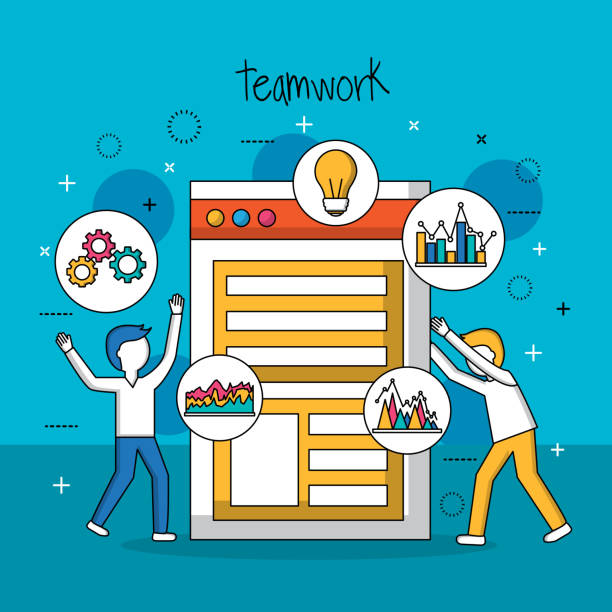
The quality of the host and server is the foundation of a #Fast_and_Efficient_Website.
Even if your site’s coding is flawless and images are optimized, weak hosting can nullify all your efforts for fast website design.
#Choosing_Appropriate_Hosting for your website is a critical step that should not be overlooked.
There are different types of hosting, including Shared Hosting, Virtual Private Server (VPS), Dedicated Server, and Cloud Hosting.
Each of these options has its advantages and disadvantages.
Shared hosting is cheaper but its resources are shared with other sites, which can affect speed.
VPS and dedicated servers offer more resources and are more suitable for high-traffic sites.
Server location is also important; a server closer to your target audience will have less response time (latency).
Using a Content Delivery Network (CDN) can also significantly improve loading speed for users in different geographical locations by caching site content on multiple servers worldwide.
Investing in a reputable and high-quality hosting service, as a #Specialized decision, will directly contribute to your website’s performance and speed.
Advanced Caching and Code Compression Techniques
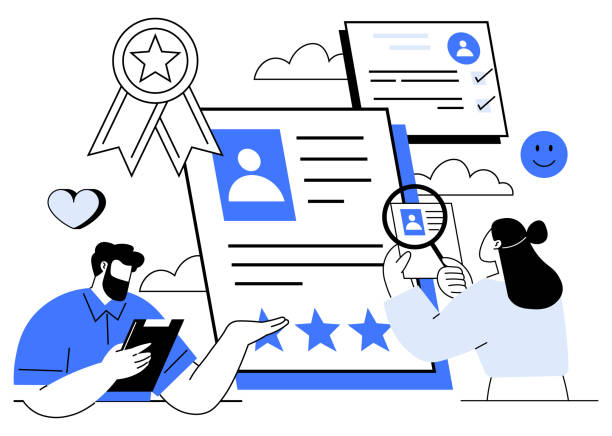
To achieve a fast website design and optimize its performance, the use of advanced caching and code compression techniques is essential.
#Browser_Caching allows the user’s browser to store static site files (such as CSS, JavaScript, images), so that on subsequent visits, there is no need to re-download these files from the server, significantly increasing loading speed.
Alongside this, #Server-side_Caching is also of high importance; this method involves storing pre-rendered pages or database query results on the server, which reduces server load and accelerates response time.
For code, #Gzip_Compression is one of the most effective methods.
This technique reduces the size of HTML, CSS, and JavaScript files before sending them to the user’s browser, which leads to reduced transfer time and consequently increased loading speed.
In addition to Gzip, #Code_Minification also involves removing white spaces, comments, and extra characters from CSS and JavaScript files, which can significantly reduce their size.
These measures, along with optimizing resource loading (e.g., asynchronous loading of CSS and JS), greatly contribute to improving your website’s overall performance and are considered important #Specialized aspects in speed optimization.
The Importance of Mobile-First and Responsive Design in Speed

In the current era, where most users connect to the internet via mobile devices, the importance of #Mobile-First and #Responsive_Design in fast website design has become more evident than ever.
The question is, how can a slow mobile website harm your business? The answer is simple: Google started “mobile-first” indexing years ago, meaning it prioritizes your site’s mobile version for ranking in search results.
If your site’s mobile version is slow, it not only provides a poor user experience but also negatively impacts your SEO ranking.
A responsive design, which enables your site to automatically adapt to the user’s screen size (whether desktop, mobile, or tablet), is crucial for #Mobile_Speed.
This approach ensures that mobile users do not need to download extra content or high-resolution images designed for larger displays.
As a result, loading time for mobile users is optimized, and bounce rate decreases.
Ignoring this aspect can mean losing a large segment of your audience and business opportunities.
This is a #Contentious_Issue that many businesses still do not pay enough attention to, while it can make a significant difference in their online success.
| Criterion | Optimization for Desktop | Optimization for Mobile |
|---|---|---|
| Images | High volume, high resolution | More compression, WebP, responsive images, Lazy Loading |
| CSS/JS | Sometimes with high load priority | Minification, Gzip, removal of extra mobile codes, asynchronous loading |
| UI/UX Elements | Complex menus, small buttons | Hamburger menus, larger buttons, touch-friendly design |
| Server Load | Medium to high | Minimizing requests, stronger caching |
Choosing the Right CMS and Speed Optimization Plugins

For many websites, the Content Management System (CMS) plays a central role.
Choosing the #Right_CMS can significantly impact the potential for fast website design.
WordPress, Joomla, and Drupal are among the most popular CMSs, each with its advantages and disadvantages.
WordPress, with its vast market share, offers a rich ecosystem of plugins and themes.
For speed optimization in WordPress, using specialized caching plugins like WP Super Cache, LiteSpeed Cache, or WP Rocket is highly recommended.
These plugins can automatically enable browser and server caching, compress code, and optimize images.
Additionally, some plugins are also useful for database optimization or #Lazy_Loading images.
However, care must be taken when selecting plugins; excessive use or installation of low-quality plugins can by itself lead to a decrease in speed.
It is recommended to always use reputable and up-to-date plugins and only install those you genuinely need.
This section of #Expert_Guidance helps you pave the way to a fast website by intelligently choosing the CMS and related tools.
Do you have an online store but your sales aren’t as expected? Rasawab solves your problem forever with professional e-commerce website design!
✅ Significant increase in conversion rates and sales
✅ Exceptional user experience for your customers
⚡ Click here for a free consultation with Rasawab!
Case Study and Common Challenges in Speed Optimization
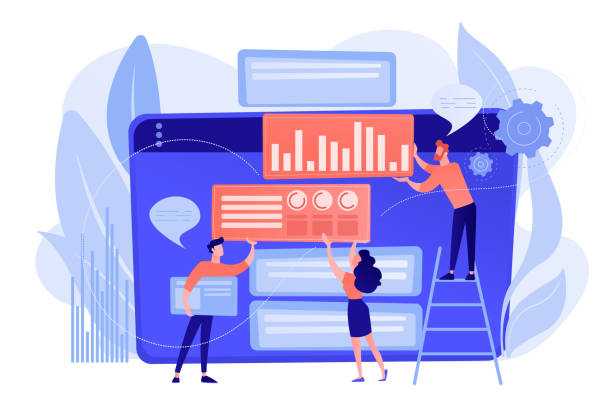
On the path to fast website design, we always face challenges.
A classic #Case_Study could be an e-commerce website experiencing slow loading due to high-quality but unoptimized images.
In such a case, reducing image sizes and implementing Lazy Loading can cut the loading time in half or less.
Another common challenge is the presence of render-blocking JavaScript codes that prevent page content from being displayed until they are fully loaded.
This problem can be resolved by deferring JS loading or asynchronous loading.
Speed troubleshooting can be complex; sometimes a specific plugin, a server configuration error, or even an external web font can be the primary cause of sluggishness.
The important point is that speed optimization is an ongoing process, not a one-time task.
Websites may slow down again with the addition of content, plugins, or changes in traffic.
The good news is that with existing tools and techniques, almost all these challenges are solvable.
This #Analytical section shows how a systematic approach can identify and resolve speed issues, creating a website that is not only fast but also stable and efficient, offering a #Pleasurable speed experience to the user.
Continuous Maintenance and Monitoring of Website Speed
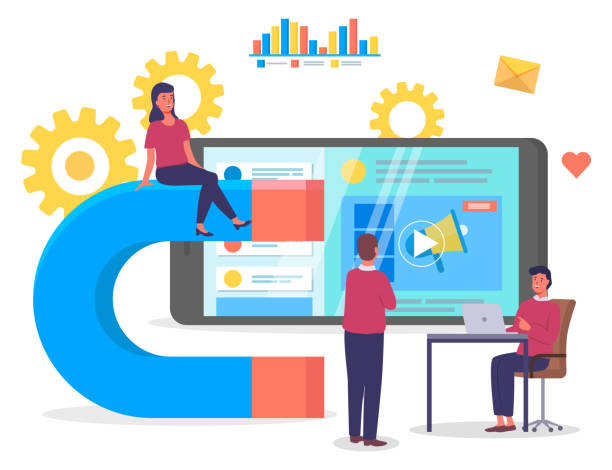
The process of fast website design does not end, but rather is a continuous cycle of #Website_Maintenance and #Speed_Monitoring.
After implementing all optimizations, it is important to regularly track your website’s performance.
This involves continuous use of speed assessment tools like PageSpeed Insights and GTmetrix to ensure that new changes (such as adding content, installing new plugins, or CMS updates) do not negatively impact speed.
Setting up periodic speed reports can help you quickly identify any performance drops.
Additionally, regularly checking server performance and hosting resources is crucial, as increased traffic or server-side issues can suddenly cause speed reductions.
Planning for regular software updates (CMS, plugins, themes) and database optimization are also preventive measures to maintain site speed.
This #Educational and #Guidance approach to maintaining a fast and responsive website helps you always provide the best user experience and stay ahead in online competition.
Remember that your website’s speed is a reflection of your professionalism and commitment to users.
Frequently Asked Questions
| No. | Question | Answer |
|---|---|---|
| 1 | What is the concept of “fast website design”? | Designing a website that loads in the shortest possible time and provides a smooth user experience, with an emphasis on performance optimization. |
| 2 | Why is website loading speed important for users? | Today’s users have little patience; slow sites lead to early page abandonment, poor user experience, and loss of visitors. |
| 3 | How does fast website design affect SEO? | Search engines like Google consider site speed one of the ranking factors. Faster sites achieve better rankings in search results. |
| 4 | What are the main factors affecting site speed? | Image optimization, caching, compression of CSS and JS files, using powerful hosting, reducing HTTP requests, and optimized coding. |
| 5 | How can website loading speed be measured? | By using tools such as Google PageSpeed Insights, GTmetrix, Lighthouse, and Pingdom Tools, which provide detailed performance reports. |
| 6 | What is the role of images in site speed and how should they be optimized? | High-volume images can significantly reduce site speed. They should be compressed, modern formats (like WebP) should be used, and the Lazy Load technique should be utilized. |
| 7 | What is the importance of choosing appropriate hosting in fast website design? | A powerful and high-speed hosting (preferably SSD) with optimized servers close to target users is the foundation of a site’s speed. |
| 8 | How does caching help increase website speed? | Caching allows the user’s browser to store versions of site files, so on subsequent visits, there is no need to re-download all content, and the site is displayed faster. |
| 9 | Is the use of CDN (Content Delivery Network) recommended in fast website design? | Yes, CDN significantly increases loading speed by storing copies of site content on various geographical servers and delivering it from the closest server to the user. |
| 10 | What are the key tips for developers to design a high-speed website? | Writing clean and optimized code, minimal use of plugins, optimizing database queries, using lightweight frameworks, and implementing Lazy Load for content. |
And other services of Rasawab Advertising Agency in the field of advertising
Innovative ideas for advertising new products for importers
The impact of discounts in computer accessories advertorials
The role of storytelling in advertorials for importers
How advertorials help improve your website’s SEO
And over a hundred other services in the field of internet advertising, advertising consultation, and organizational solutions
Internet Advertising | Advertising Strategy | Advertorial
🚀 Are you ready to transform your business in the digital world? Rasawab Afarin Digital Marketing Agency, specializing in professional website design, SEO, and content marketing, offers a comprehensive solution for your growth and visibility. Discover your brand’s true potential with us.
📍 Tehran, Mirdamad Street, next to Bank Markazi, Southern Kazeroon Alley, Ramin Alley, No. 6

